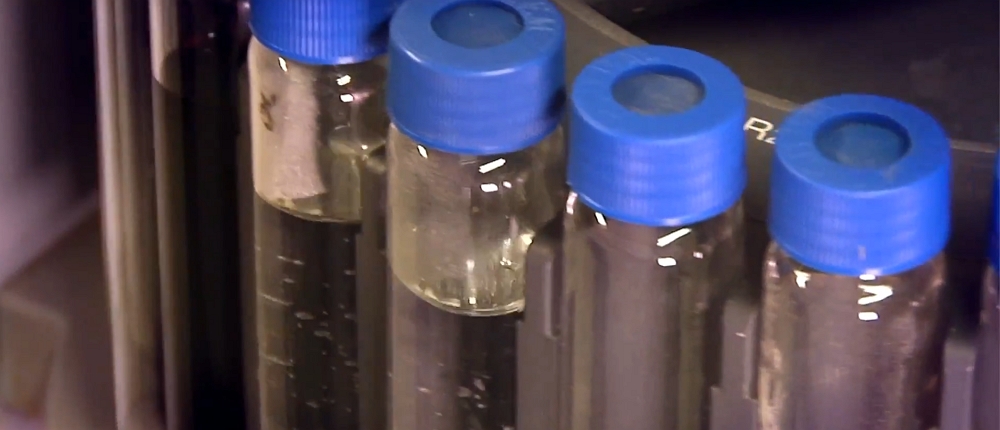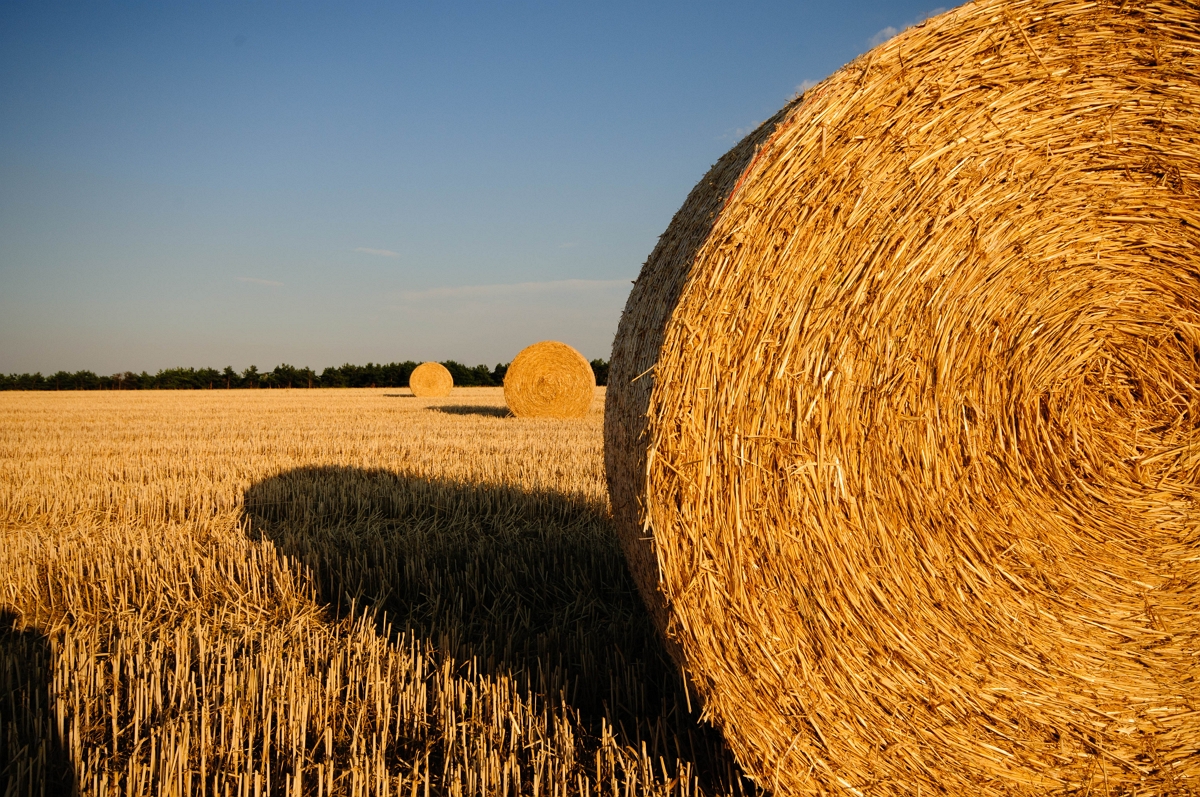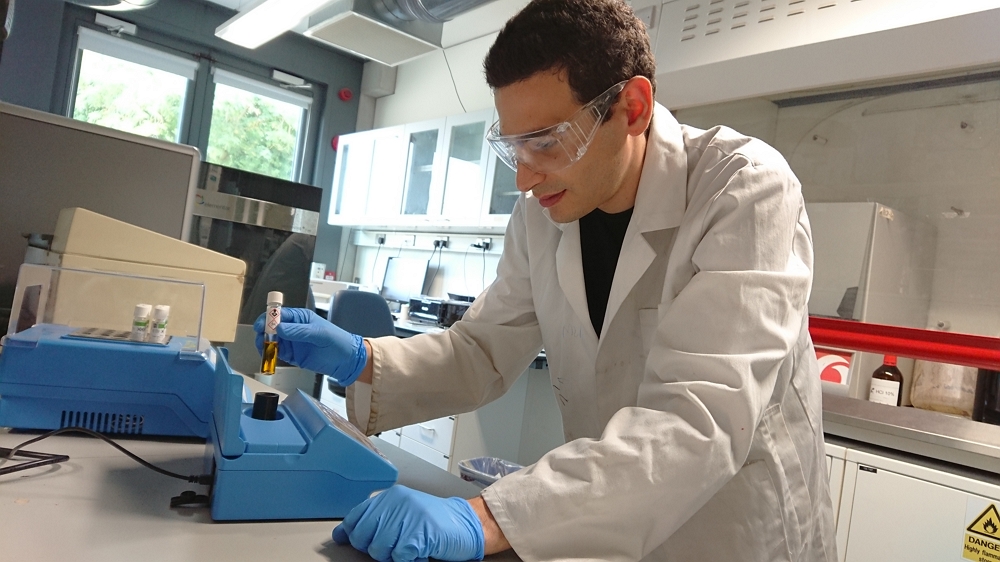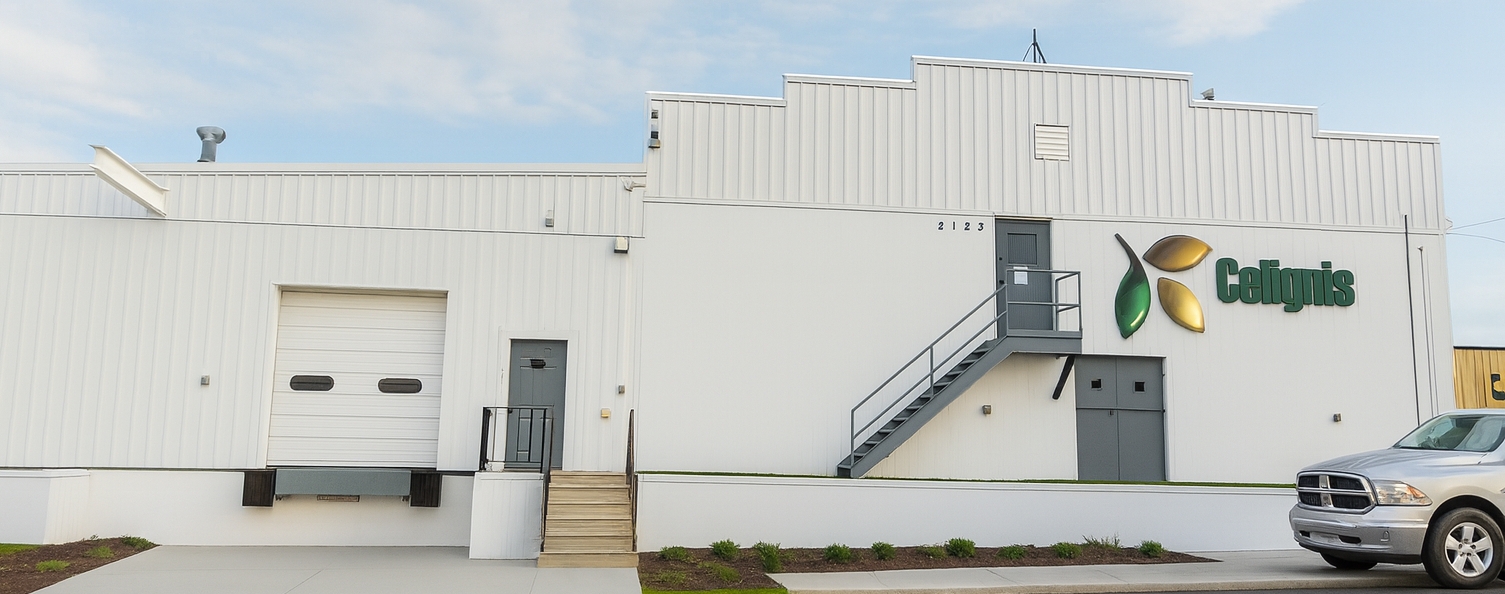How to Determine the Efficiency of Biomass Pretreatment Processes
The key to exploiting the chemical value of lignocellulosics is to depolymerise the lignocellulosic matrix in order to obtain smaller molecules that can be utilised, or further converted to platform chemicals and biofuels. There are two major pathways by which biorefineries undertake this conversion: through hydrolysis processes that aim to liberate sugars from the lignocellulosic polysaccharides (i.e. cellulose and hemicellulose), and through thermal processes (such as pyrolysis and gasification) that degrade more extensively the components of both polysaccharides and lignin.
Why Pre-treatment is Necessary
For these, and other, reasons most hydrolysis technologies involve a pretreatment step prior to the hydrolysis of the cellulose. This typically targets the removal of hemicellulose and/or lignin, leaving a solid predominately cellulosic residue that is more amenable to conversion. The hemicellulose is typically present in the liquid output from the pretreatment and can be valorised in separate processes.
Types of Pre-Treatments
Important Considerations When Designing a Pretreatment
Therefore, the compositions of the liquid and solid outputs of biomass pretreatment processes can form a wide spectrum of potential products that can exist in greatly varying concentrations which will depend on: the feedstock, the type of pretreatment, and the wide array of potential pretreatment conditions (e.g. solid loading, temperature, pressure, solvent etc.).
Recommended Analytical Methods to Evaluate Pretreatments
(1) The Starting Feedstock
Similarly, if you expect that there will be some starch in your sample then we also recommend that starch analysis of your starting feedstock be undertaken as this constituent may also be removed and hydrolysed in many pretreatment processes.
When determining the lignocellulosic composition of the sample it is important that each of the constituent sugars within the polysaccharides (e.g. glucose, xylose, arabinose, mannose, etc.) are measured separately so that their fate during the pretreatment process can be monitored.
Additionally, it may be useful to also determine the uronic acid composition of the sample.
(2) The Liquid Stream
We would also advise that the liquid be analysed for the main organic acid and furanic sugar-degradation products.

(3) The Solid Residue
Analysis at Celignis
Please contact us with your specific requirements and we will be happy to select a set of analysis packages suitable for your needs. There is also additional information on the website relating to our analytical techniques for pretreatment liquids, oligosaccharides, sugar-degradation products, and the solid residues from pretreatment processes.
Seaweed, an abundant third-generation biomass, has garnered significant interest for hydrocolloid extraction due to its unique composition. The extraction of these hydrocolloids, coupled with the negligible presence of lignin, leaves behind a cellulose-rich residue ideal for nanocellulose production—a potential that remains underexplored. Nanocellulose, known for its versatility, finds applications across composite, fibre, and medical industries. This review delves into the structure, composition, and extraction processes of seaweed hydrocolloids. It also investigates green emerging pretreatment techniques for hydrocolloid extraction, evaluating their advantages and limitations. This review further analyses nanocellulose produced from seaweed residues, focusing on treatment types, morphology, thermal stability, and crystallinity to determine optimal applications. Lastly, a comprehensive biorefinery approach is proposed, integrating hydrocolloid extraction and nanocellulose production to maximize the benefits from the seaweed industry. | |
Economic production of fermentable sugars from lignocellulosic biomass is critical for the biorefinery applications in the bioeconomy industry. This study demonstrates effective enzymatic hydrolysis of recalcitrant softwood using newly identified fungus Penicillium rotoruae. Initially, nineteen fungal isolates were screened on softwood galactoglucomannan (GGM), with nine showing strong responses in the liquid culture. Trichoderma viride, Penicillium rotoruae, and Amorphotheca resinae showed highest B-mannanase, B-mannosidase, and a-galactosidase activities. P. rotoruae demonstrated superior main chain cleaving enzyme activities, while A. resinae excelled in the side chain cleaving activity. The crude enzyme of P. rotoruae was evaluated on two Pinus radiata substrates. Using soluble GGM, P. rotoruae released 34.3% monomeric sugars (32.1 g/L reducing sugars), outperforming commercial CTec-2 (22.9% and 23.2 g/L respectively). Co-application of CTec-2 with P. rotoruae enzymes increased monomeric sugar yield to 56.3%, with galactose, mannose, and glucose increasing 20-, 3.6-, and 2.2-fold respectively. Using insoluble pulp, co-application yielded 88% of monomeric sugars (20.2 g/L reducing sugars) representing an increase of 20% soluble sugars relative to CTec-2 used alone. Techno-economic analysis indicated an increase in annual EBITDA, a positive ROCE and sugar cost savings of NZD 125/t demonstrating significant economic potential for softwood biorefineries. | |
The production of high-value commodities from sugarcane bagasse and harvest residues could be integrated into existing sugarcane mills to create sugarcane biorefineries. Three distinctly different domains of operating conditions were optimised for autocatalyzed steam pretreatment and enzymatic hydrolysis of these lignocelluloses, to provide sugars according to biorefinery priorities, i.e. (i) maximum digestibility of the solids for glucose only, (ii) maximum hemicellulose recovery in the prehydrolysate for xylose only, or (iii) maximum combined sugar yield (CSY; glucose plus xylose). Bagasse pretreatment showed isolated optima for each response at (i) 215 °C, 15 min; (ii) 202.2 °C, 5 min; and (iii) 215 °C, 5 min. For the harvest residues, the three domains of optimum conditions overlapped within temperatures of 198 and 200 °C, and times of 8 and 12°min, allowing for a single pretreatment condition that meets all three criteria. The practicality and robustness of the preferred pretreatment conditions were demonstrated with a mixed stream of both feedstocks. | |
The nature of a sweet sorghum cultivar influences the recovery of sugars from the bagasse during pretreatment. The sugars recovered are used in applications for conversion to high-value products such as alcohols, organic acids, and other fuels and chemicals. The severity of the pretreatment used plays a crucial role in the yield and quality of the sugars that can be recovered. Therefore, a strategic approach was taken to lower the severity of the pretreatment process to a combined severity factor (CSF) value of 0.48, whilst maintaining a high level of total-sugar recovery (i.e. 68% (w/w) and higher). This was achieved by screening 23 sweet sorghum cultivars for high-performance characteristics at low-severity conditions and optimizing the pretreatment process conditions. The pretreatment conditions included time, temperature, and acid concentration ranges of 5 to 60 min, 150 to 210 oC, and 0.00–0.96% (w/w) H2SO4, respectively. Cultivar AP6 was identified as the best performer, producing the highest total sugar yield of 78.17%. A reduction in total by-product formation from 4.79 to 2.79 g/100 g biomass was also observed. Three preferred cultivars selected for pilot scale pretreatment using steam explosion resulted in maximum total sugar recoveries that exceeded 80% (w/w). Cultivar selection provides an opportunity to utilize sweet sorghum bagasse that will liberate sugars at desired yields while reducing the generation of by-products by implementing low severity pretreatments. | |
Acetone organosolv fractionation of beech and birch wood at the lab-scale results in high sugar yields from the (hemi)cellulose and the isolation of a high-purity lignin. In this study, the process is scaled up to validate the technology at the pilot scale using industrial-size beech and birch wood chips and low liquid-to-solid ratios as a next step toward commercialization. Translation of the fractionation process to the pilot-scale showed a similar performance as compared to the lab-scale processing with a good conversion of the wood polymeric pentoses to mostly monomeric sugars and a high delignification. Continuous lignin precipitation by solvent evaporation using the LigniSep process resulted in the formation of nonsticky lignin aggregates with a good filterability. The improved lignin yields and advanced process design as compared to the traditional dilutive lignin precipitation approaches are likely to translate to a better process economy. The pulp washing efficiency and the recovery of (nonprecipitable) lignin from the aqueous hemicellulose stream still need to be improved for an efficient process design. However, the fractionation performance and high product concentrations in the spent liquor provide an excellent start position for improved process design at the commercial scale. | |
weet sorghum bagasse displays many characteristics rendering it a promising substrate for lignocellulosic ethanol production. In this study, the steam pretreatment catalyst, enzymatic hydrolysis and the substrate loading for the fermentation were investigated in order to maximise the production of ethanol from the feedstock. The results deemed water as a sufficient pretreatment catalyst since the SO2 impregnation of the biomass did not produce any significant beneficial effects on the yield of ethanol produced. The preferred pretreatment and enzymatic hydrolysis conditions were incorporated in a fed-batch simultaneous saccharification and fermentation (SSF) process using pressed-only (not washed) WIS at a final solid loading of 13% (w/w) that resulted in the targeted ethanol concentration of 39 g/L with a corresponding yield of 82% of the theoretical maximum. Yeast inhibition coupled with significant glucose accumulation was observed at higher solid loadings of 16% and 20%. Ultimately, the sweet sorghum bagasse could be integrated into existing ethanol production regimes to improve the global bioenergy production. | |
Commercial production of inulooligosaccharides (IOS) relies largely on chicory roots. However, Jerusalem artichoke (JA) tubers provide a suitable alternative due to their high inulin content and low cultivation requirements. In this study, three inulin-rich substrate preparations from JA were investigated to maximize IOS production, namely powder from dried JA tuber slices (Substrate 1), solid residues after extracting protein from the JA powder (Substrate 2) and an inulin-rich fraction extracted from protein extraction residues (Substrate 3). The preferred temperature, pH and inulin substrate concentration were determined after which enzyme dosage and extraction time were optimized to maximize IOS extraction from the three substrates, using pure chicory inulin as benchmark. Under the optimal conditions, Substrate 3 resulted in the highest IOS yield of 82.3% (w/winulin). However, IOS production from the Substrate 1 proved more efficient since it renders the highest overall IOS yield (mass of IOS per mass of the starting biomass). In the case of co-production of protein and IOS from the JA tuber in a biorefinery concept, IOS production from the Substrate 2 is preferred since it reduces the inulin losses incurred during substrate preparation. For all the inulin-rich substrates studied, an enzyme dosage of 14.8 U/ginulin was found to be optimal at reaction time less than 6 h. JA tuber exhibited excellent potential for commercial production of IOS with improved yield and the possible advantage of a reduced biomass cost. | |
BACKGROUND | |
Brewers' spent grains (BSG) make up to 85% of a brewery's solid waste, and is either sent to landfill or sold as cheap animal feed supplement. Xylo-oligosaccharides (XOS) obtained from BSG are antioxidants and prebiotics that can be used in food formulations as low-calorie sweeteners and texturisers. The effect of extremely low acid (ELA) catalysis in liquid hot water (LHW) hydrothermal treatment (HTT) was assessed using BSG with dry matter contents of 15% and 25%, achieved by dewatering using a screw press. Batch experiments at low acid loadings of 5, 12.5 and 20 mg/g dry mass and temperatures of 120, 150 and 170 C significantly affected XOS yield at both levels of dry mass considered. Maximum XOS yields of 76.4% (16.6 g/l) and 65.5% (31.7 g/l) were achieved from raw BSG and screw pressed BSG respectively, both at 170 C and using 5 mg acid/g dry mass, after 15 min and 5 min, respectively. These XOS yields were obtained with BSG containing up to 63% less water and temperatures more than 20 C lower than that reported previously. The finding confirms that ELA dosing in LHW HTT allows lowering of the required temperature that can result in a reduction of degradation products, which is especially relevant under high solid conditions. This substantial XOS production intensification through higher solid loadings in HTT not only achieved high product yield, but also provided benefits such as increased product concentrations and decreased process heat requirements. | |
Jerusalem artichoke (JA) is a crop with excellent potential for application in biorefineries. It can resist drought, pests, and diseases and can thrive well in marginal lands with little fertilizer application. The JA tubers contain considerable quantities of inulin, which is suitable for the production of inulooligosaccharides (IOS), as a high-value prebiotic, dietary fiber. In this study, five JA tuber biorefinery scenarios were simulated in Aspen Plus and further evaluated by techno-economic and sensitivity analyses. Production of IOS, proteins and animal feed was studied in scenarios A and C, applying various biorefinery configurations. Scenario B explored the option of producing only IOS and the sale of residues as animal feed. Scenarios D and E investigated the economic potential of biofuel generation from residues after IOS and protein production by generation of biogas and ethanol respectively, from residues. Based on the chosen economic indicators, scenario B resulted in the lowest minimum selling price (MSP) of 3.91 US$ kg-1 (market price 5.0 US$ kg-1) with correspondingly reduced total capital investment (TCI) and total operating cost (TOC) per mass unit produced of IOS of 18.91 and 2.59 US$ kg-1 respectively, compared with other studied scenarios. Considering the set production scale, it is more profitable when the residues are sold as animal feed instead of being converted into biofuel, due to the capital-intensive nature of the biofuel production processes. The coproduction of protein had a negative impact on the economics of the process as the associated capital and operating expenditure outweighed the associated revenue. | |
Pretreatments of lignocellulosic biomass prior to fast pyrolysis need to give a better yield and quality of pyrolysis oil and be practical to implement at a commercial scale. This study demonstrated, at a large pilot scale, that thermomechanical refining can reduce the particle size, hemicellulose content, and mineral content of pine wood chips, leading to improved yields of carbohydrate-derived chemicals on fast pyrolysis. Additionally, a hemicellulose-rich byproduct can be generated during the pretreatment for separate valorization. The impact of different presteaming times, citric acid infusion, and disc refining on the yield and composition of the pyrolysis oil was studied. Presteaming of citric acid-infused wood chips at 173 C for 3 min and refining to wood fiber proved most effective in improving the yield of pyrolysis oil organics, including the valuable biochemicals levoglucosan and hydroxyacetaldehyde, while reducing the yields of low-value char and noncondensable gases. | |
Biobutanol has gained attention as an alternative renewable transportation fuel for its superior fuel properties and widespread applications in chemical industry, primarily as a solvent. Conventional butanol fermentation has drawbacks that include strain degeneration, end-product toxicity, by-product formation, low butanol concentrations and high substrate cost. The complexity of Clostridium physiology and close control between sporulation phase and ABE fermentation has made it demanding to develop industrially potent strains. In addition to the isolation and engineering of superior butanol producing bacteria, the development of advanced cost-effective technologies for butanol production from feedstock like lignocellulosic biomass has become the primary research focus. High process costs associated with complex feedstocks, product toxicity and low product concentrations are few of the several bioprocess challenges involved in biobutanol production. The article aims to assess the challenges in lignocellulosic biomass to biobutanol conversion and identify key process improvements that can make biobutanol commercially viable. | |
Rice straw is an attractive lignocellulosic material for bioethanol production since it is one of the most abundant renewable resources. It has several characteristics, such as high cellulose and hemicelluloses content that can be readily hydrolyzed into fermentable sugars. But there occur several challenges and limitations in the process of converting rice straw to ethanol. The presence of high ash and silica content in rice straw makes it an inferior feedstock for ethanol production. One of the major challenges in developing technology for bioethanol production from rice straw is selection of an appropriate pretreatment technique. The choice of pretreatment methods plays an important role to increase the efficiency of enzymatic saccharification thereby making the whole process economically viable. The present review discusses the available technologies for bioethanol production using rice straw. | |





